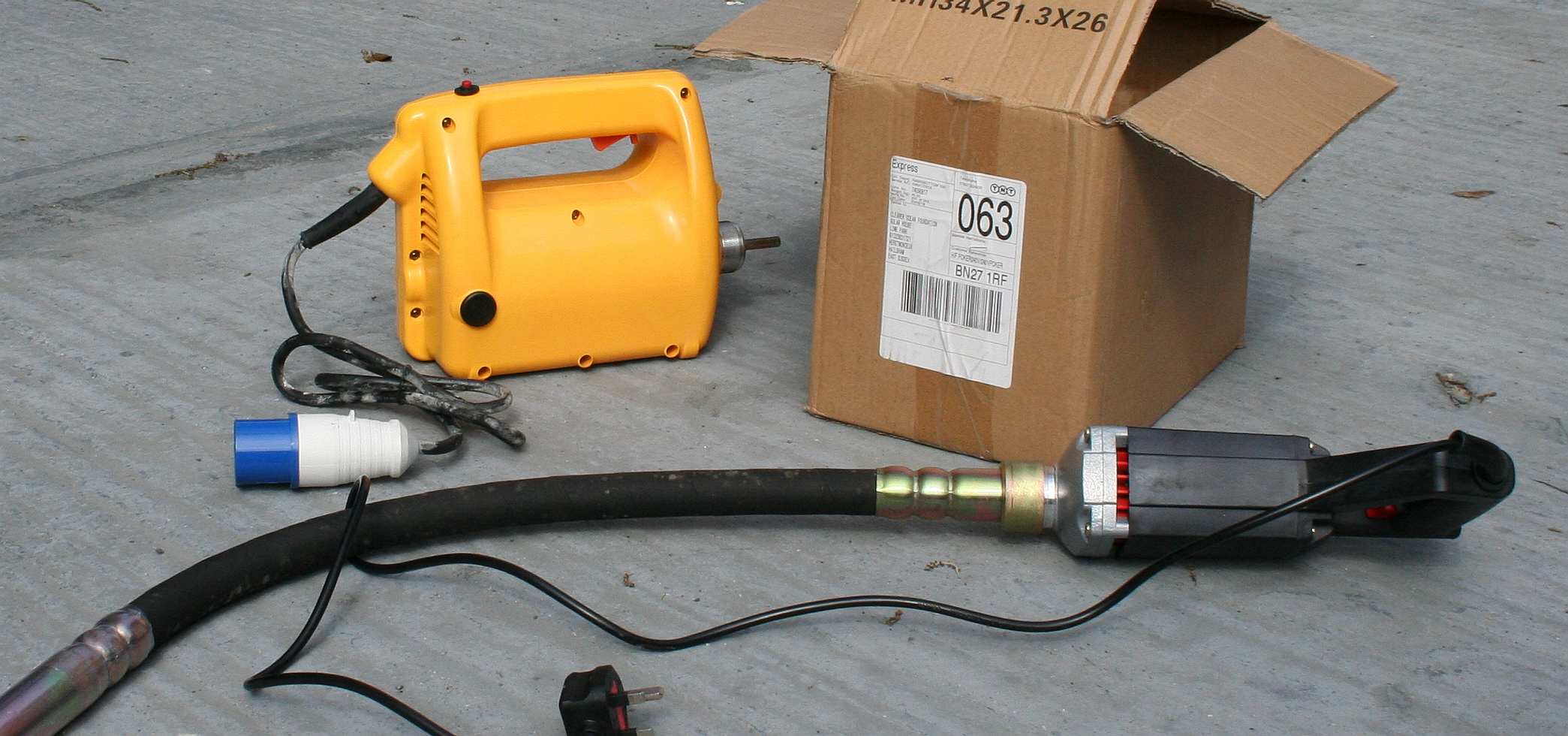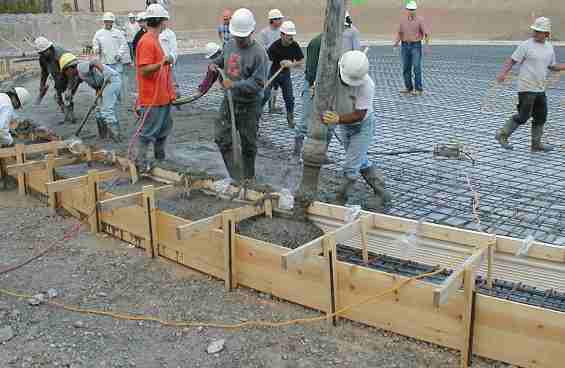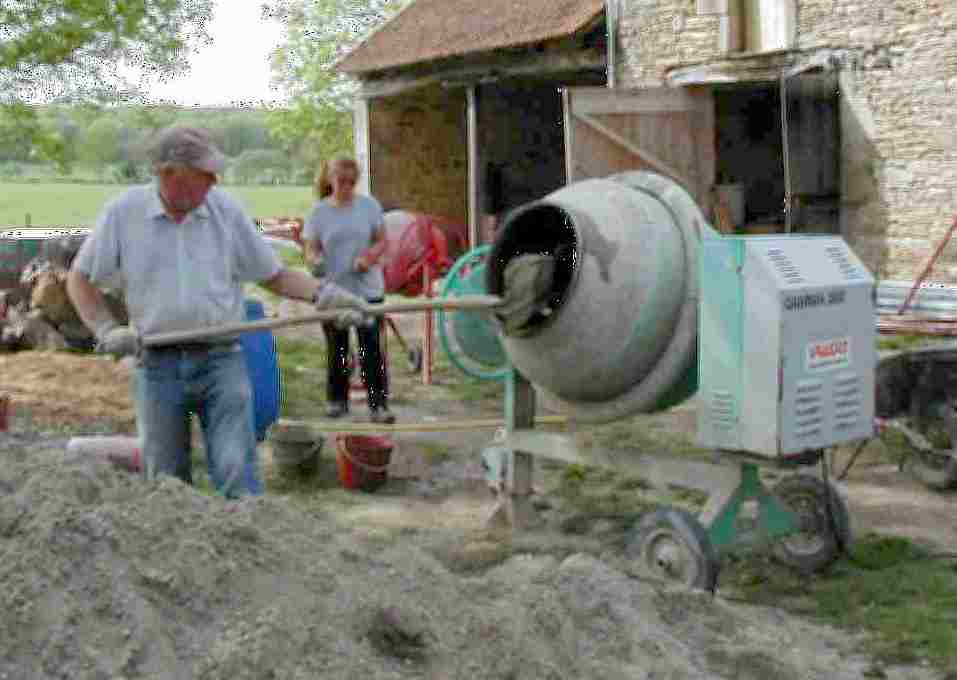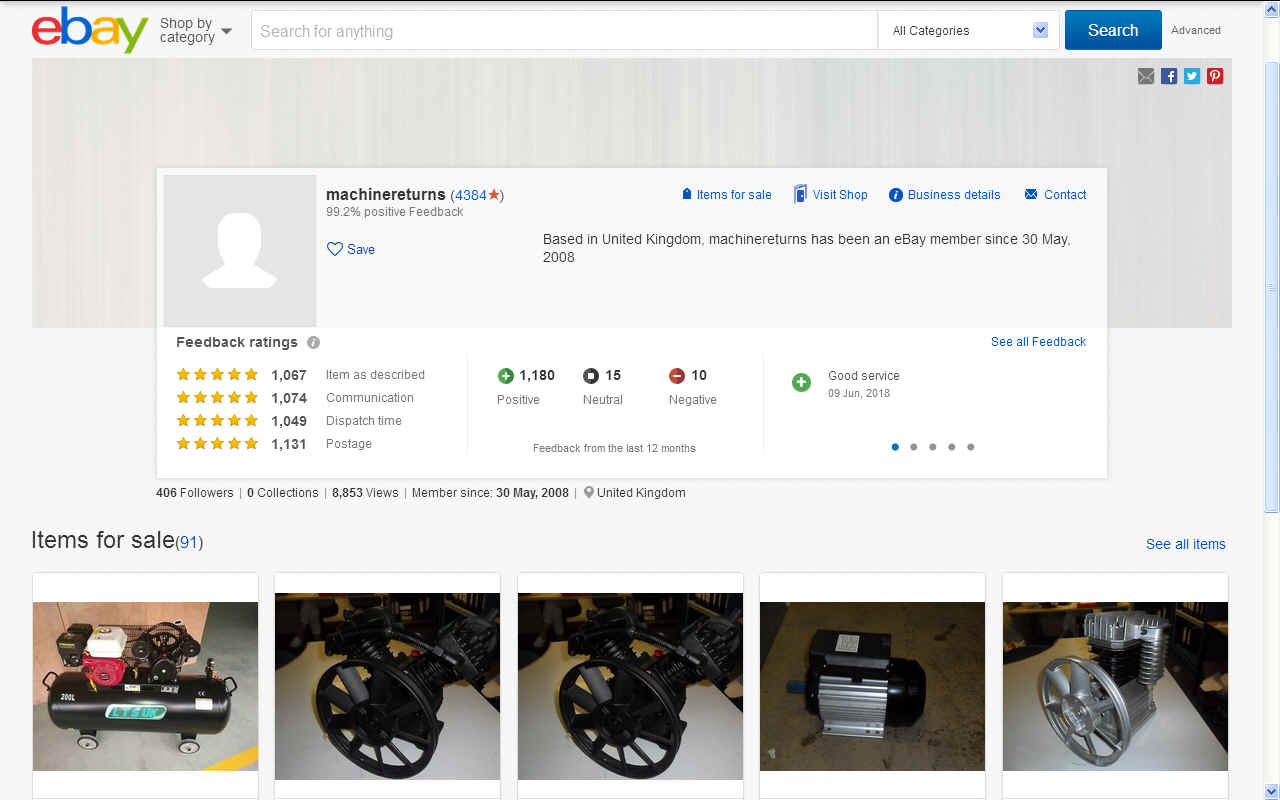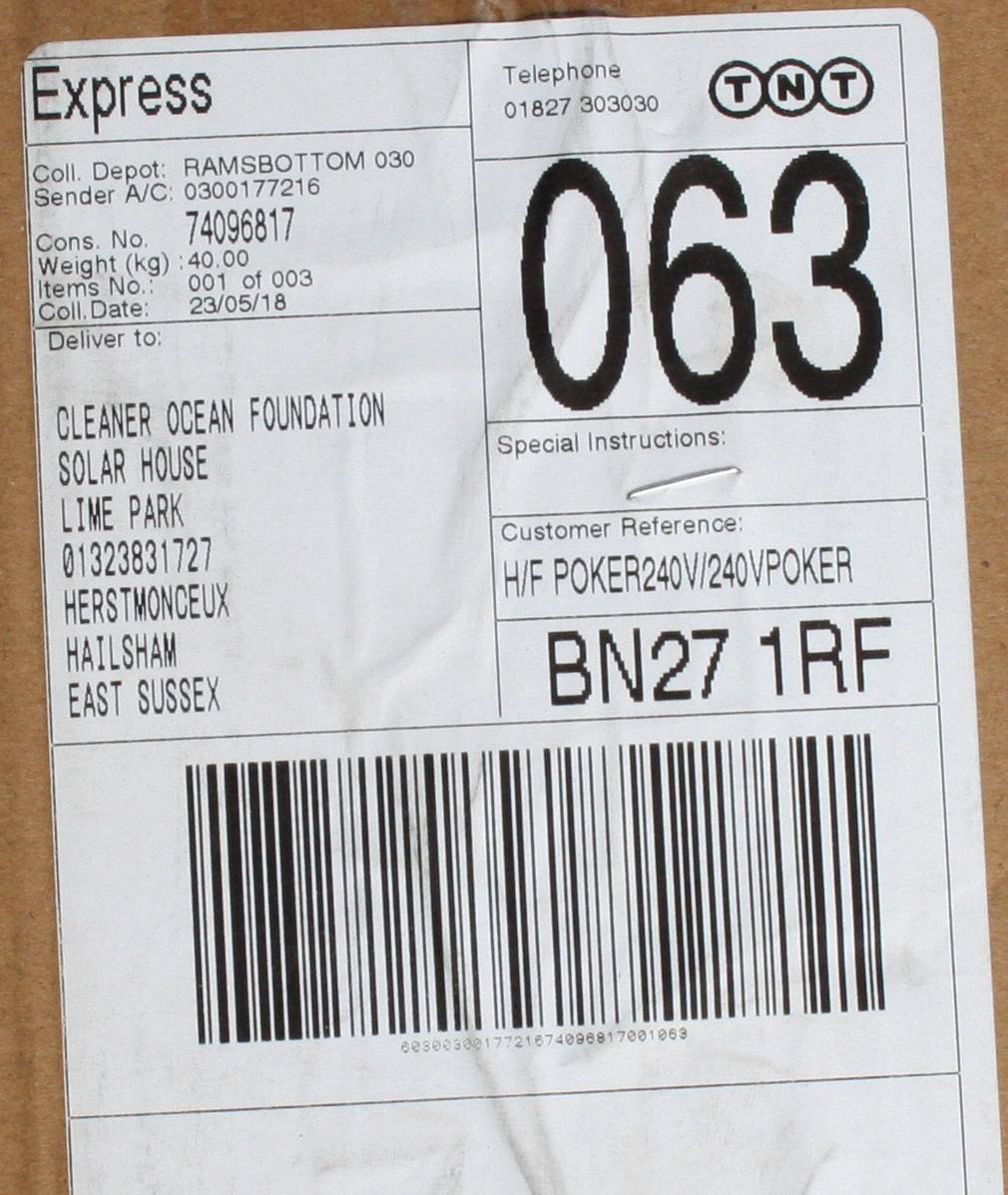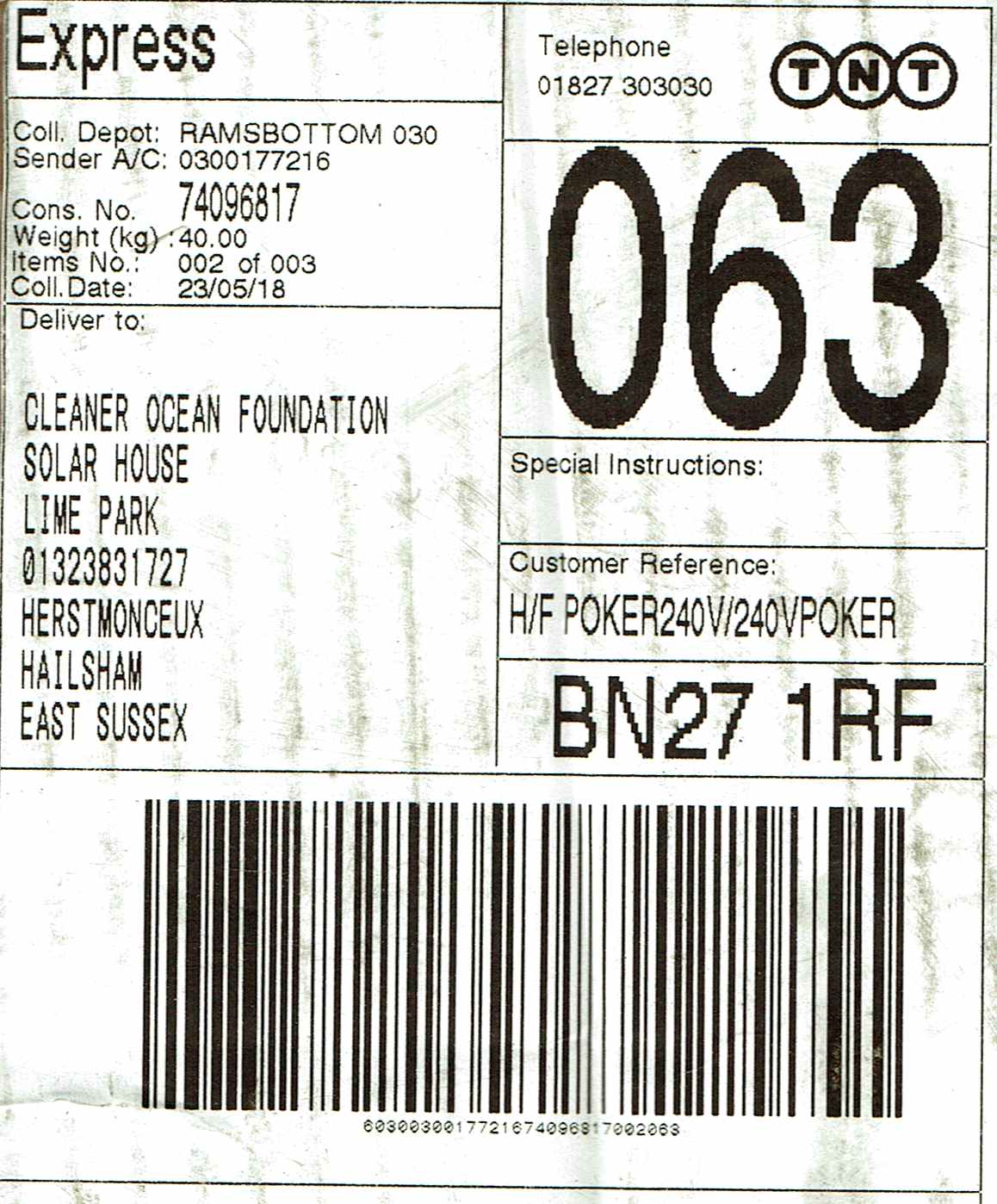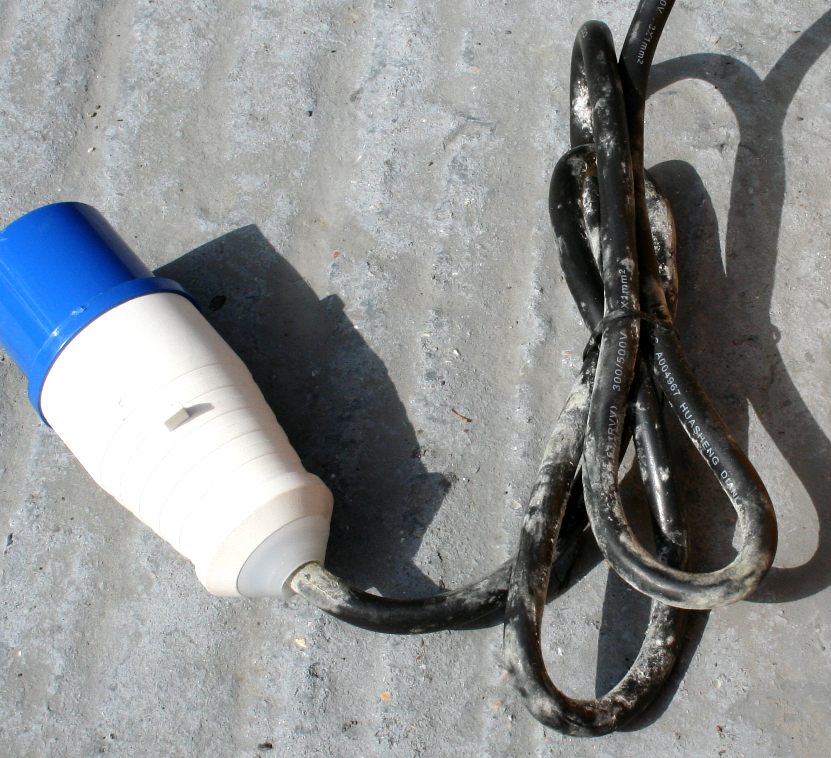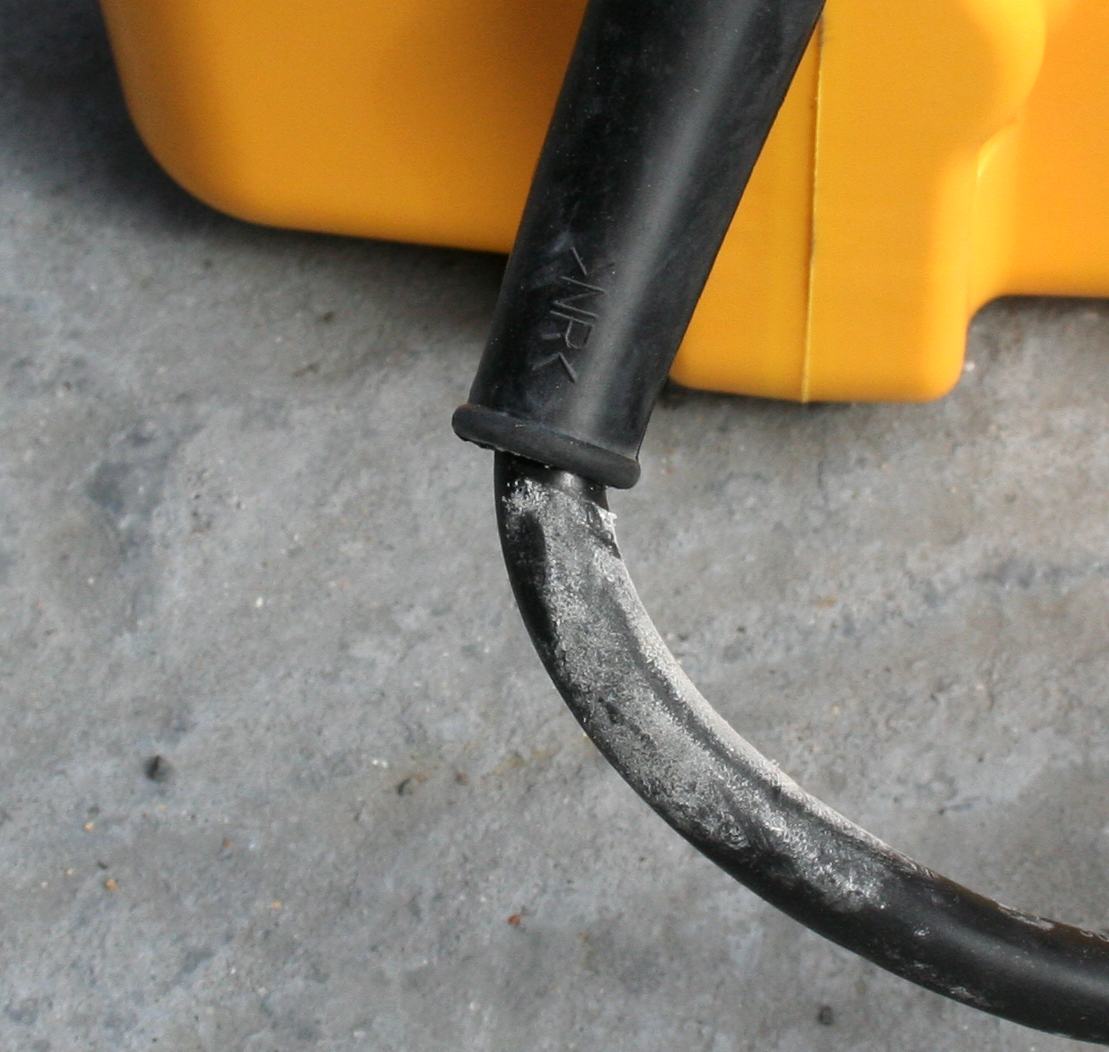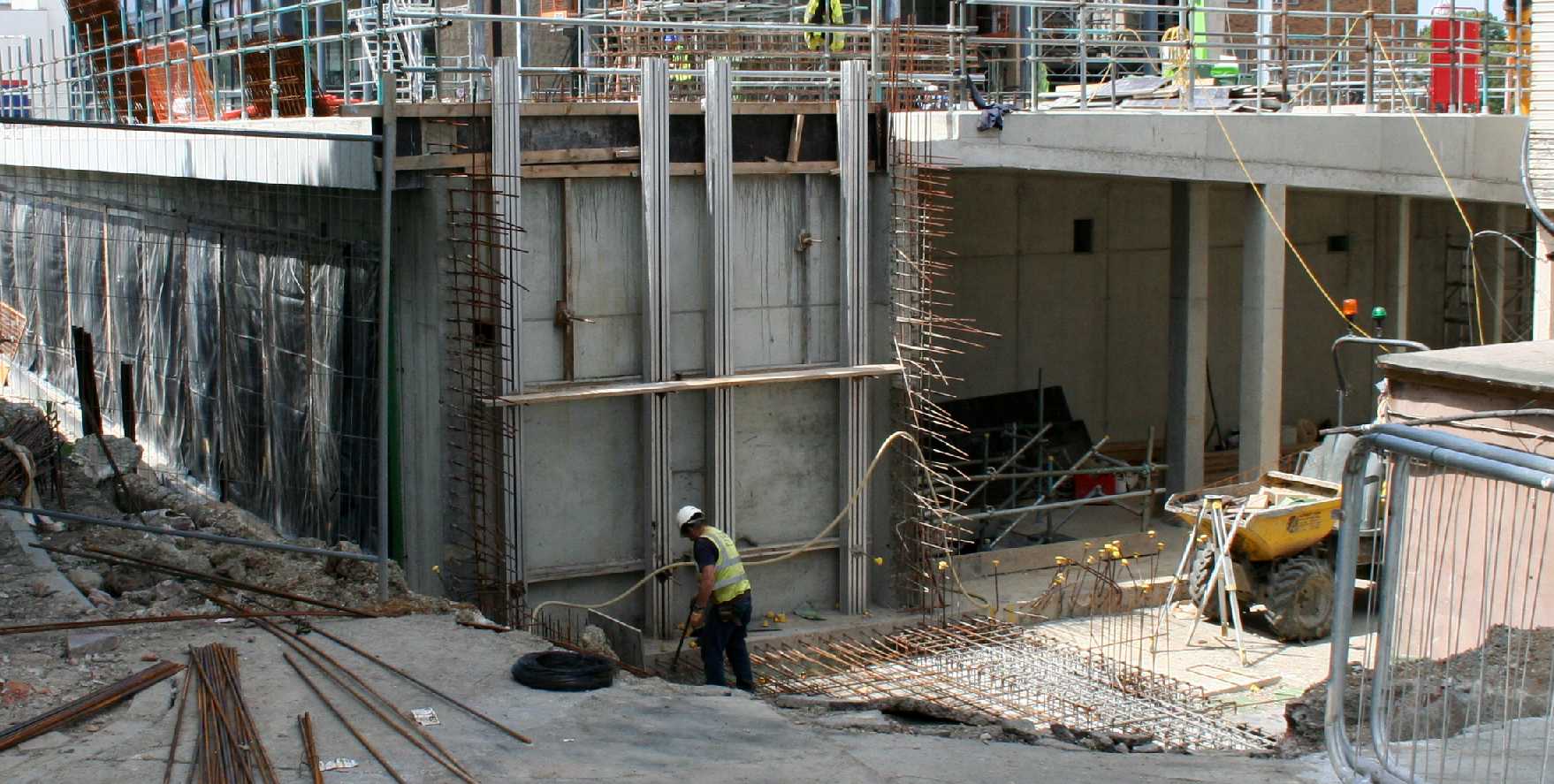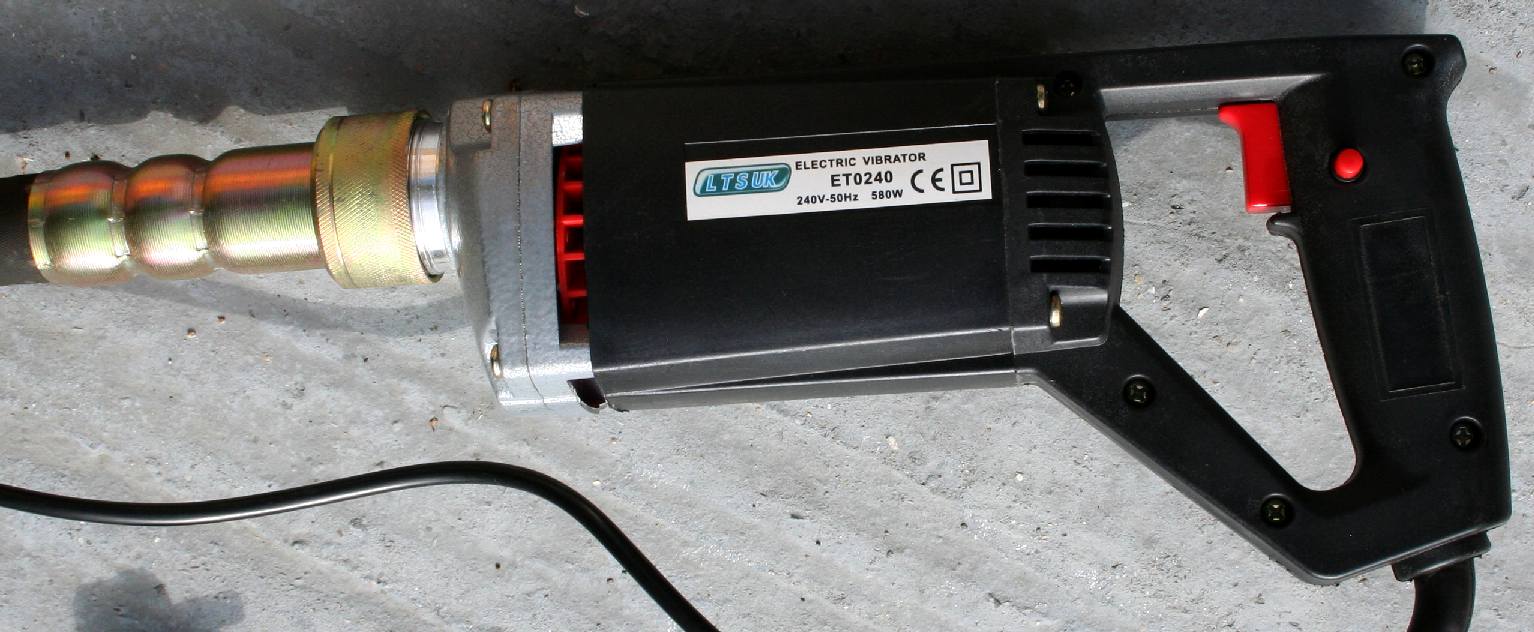|
CONCRETE
|
|||||||||||||||||||||||||||||||||||||||||||||||||||||||||||||||||||||||||||||||||||||||||||||||||||||
|
INCOMPLETE - Two out of three = nothing. What use is a motor without the vibrating hose to go with it. This is what was received by one customer from C Bury Sales Ltd in Blackburn. The order was placed via an Ebay advertisement on the telephone. The lady working for Chris Bury said the items (all of the package) would be with the customer within 3 or 4 days. Sadly, one item was missing, the 4 meter hose and head, meaning that the motor unit was useless.
Then, it is alleged, that when telephoning to ask what had happened to the four meter hose, (Kelsy) the sales assistant said the customer had signed for three packages. That was not the case, but the customer was now worried. On another call Chris Bury said he'd chase and if necessary send out a replacement, indicating that this was not his fault, but the fault of TNT the carrier.
After more than two week TNT were contacted and confirmed that they'd not delivered three packages, only two being scanned in. That appeared to mean that TNT had not been given a third package of a three package consignment.
HISTORY
Cement has been around for at least 12 million years. When the earth itself was undergoing intense geologic changes natural cement was being created. It was this natural cement that humans first put to use. Eventually, they discovered how to make cement from other materials.
Concrete is a compound material made from sand, gravel and cement. The cement is a mixture of various minerals which when mixed with water, hydrate and rapidly become hard binding the sand and gravel into a solid mass. The oldest known surviving concrete is to be found in the former Yugoslavia and was thought to have been laid in 5,600 BC using red lime as the cement.
The Assyrians and Babylonians used clay as the bonding substance or cement. The Egyptians used lime and gypsum cement. In 1756, British engineer, John Smeaton made the first modern concrete (hydraulic cement) by adding pebbles as a coarse aggregate and mixing powered brick into the cement. In 1824, English inventor, Joseph Aspdin invented Portland Cement, which has remained the dominant cement used in concrete production. Joseph Aspdin created the first true artificial cement by burning ground limestone and clay together. The burning process changed the chemical properties of the materials and Joseph Aspdin created a stronger cement than if using plain crushed limestone could produce.
The first major concrete users were the Egyptians in around 2,500 BC and the Romans from 300 BC The Romans found that by mixing a pink sand-like material which they obtained from Pozzuoli with their normal lime-based concretes they obtained a far stronger material. The pink sand turned out to be fine volcanic ash and they had inadvertently produced the first 'pozzolanic' cement. Pozzolana is any siliceous or siliceous and aluminous material which possesses little or no cementitious value in itself but will, if finely divided and mixed with water, chemically react with calcium hydroxide to form compounds with cementitious properties.
The Romans made many developments in concrete technology including the use of lightweight aggregates as in the roof of the Pantheon, and embedded reinforcement in the form of bronze bars, although the difference in thermal expansion between the two materials produced problems of spalling. It is from the Roman words 'caementum' meaning a rough stone or chipping and 'concretus' meaning grown together or compounded, that we have obtained the names for these two now common materials.
Building a Dam using steel reinforced concrete
Reinforcement In
1830, a publication entitled, "The Encyclopaedia of Cottage, Farm
and Village Architecture" suggested that a lattice of iron rods
could be embedded in concrete to form a roof. Eighteen years later, a
French lawyer created a sensation by building a boat from a frame of
iron rods covered by a fine concrete which he exhibited at the Paris
Exhibition of 1855. Steel reinforced concrete was now born. The man
normally credited with its introduction as a building material is
William Wilkinson of Newcastle who applied for a patent in 1854 for
"improvement in the construction of fireproof dwellings,
warehouses, other buildings and parts of the same". It
is not only fire resistance that is improved by the inclusion of steel
in the concrete matrix. Concrete, although excellent in compression,
performs poorly when in tension or flexure. By introducing a network of
connected steel bars, the strength under tension is dramatically
increased allowing long, unsupported runs of concrete to be produced. Steel
and concrete complement each other in many ways. For example, they have
similar coefficients of thermal expansion so preventing the problems the
Romans had with bronze. Concrete also protects the steel, both
physically and chemically. Portland
cement is a complex mix of many compounds, some of which play a major
part in the hydration or chemical characteristics of the cement. It is
manufactured commercially by heating together a mixture of limestone and
clay up to a temperature of 1300 to 1500°C. Although twenty to thirty
percent of the mix becomes molten during the process the majority of the
reactions which take place are solid-state in nature and therefore
liable to be slow. Once cooled, the resulting clinker is ground to a
fine powder and a small amount of gypsum (calcium sulphate dihydrate) is
added to slow down the rate at which the cement hydrates to a workable
level. The
work of early investigators using optical and X-ray techniques, starting
in 1882 with Le Chatelier, has shown that most Portland cement clinkers
contain four principal compounds. These are tricalcium silicate
(3CaO.SiO2),
aluminate (3CaO.Al2O3)
and a ferrite phase from the (2CaO.Fe2O3
- 6CaO.2Al2O3.Fe2O3)
solid solution series that at one time was considered to have the fixed
composition (4CaO.Al2O3.Fe2O3).
These phases were named alite, belite, celite and felite respectively by
Tornebohm in 1897. When
water is mixed with Portland cement a complicated set of reactions is
initiated. The main strength giving compounds are the calcium silicates
which react with water to produce a calcium silicate hydrate gel (C-S-H
gel) which provides the strength, and calcium hydroxide which
contributes to the alkalinity of the cement. Tricalcium silicate reacts
quickly to provide high, early strengths while the reaction of dicalcium
silicate is far slower, continuing, in some cases, for many years. The
other cement compound of particular relevance to steel reinforced
concrete is tricalcium aluminate. It reacts rapidly with water to
produce calcium aluminate hydrates. The
amount of tricalcium aluminate present may well be limited as in the
case of sulphate resisting Portland cement, to prevent adverse reactions
between the hydrate and sulphates from the environment which can result
in swelling and cracking of the cement matrix. The
great advantage of tricalcium aluminate is its ability to combine with
chlorides, so removing them from the liquid phase of the cement.
Chloride ions, as will be seen, are one of the major causes of corrosion
of embedded steel.
Can sellers buy the eBay Premium Service badge? How do sellers qualify for eBay Premium Service status? How does eBay know the seller will deliver a premium service? How is this different from the previous eBay Top-rated seller status?
12,000,000
BC Reactions
between limestone and oil shale during spontaneous combustion occurred in
Israel to form a natural deposit of cement compounds. The deposits were characterized by Israeli
geologists in the 1960's and 70's. 3000
BC Egyptians Used
mud mixed with straw to bind dried bricks. They also used gypsum
mortars and mortars of lime in the pyramids. Chinese Used
cementitious materials to hold bamboo together in their boats
and in the Great Wall. 800
BC Greeks, Crete & Cyprus Used
lime mortars which were much harder than later Roman mortars. 300
BC Babylonians & As Syrians Used
bitumen to bind stones and bricks. 300
BC - 476 AD Romans Used
pozzolana cement from Pozzuoli, Italy near Mt. Vesuvius to
build the Appian Way, Roman baths, the Coliseum and Pantheon
in Rome, and the Pont du Gard aqueduct in south France. They
used lime as a cementitious material. Pliny reported a mortar
mixture of 1 part lime to 4 parts sand. Vitruvius reported a 2
parts pozzolana to 1 part lime. Animal fat, milk, and blood
were used as admixtures (substances added to cement to
increase the properties.) These structures still exist today! 1200
- 1500 The Middle Ages The
quality of cementing materials deteriorated. The use of
burning lime and pozzolan
(admixture) was lost, but reintroduced in the 1300's. 1678 Joseph
Moxon wrote about a hidden fire in heated lime that appears
upon the addition of water. 1779 Bry
Higgins was issued a patent for hydraulic cement (stucco) for
exterior plastering use. 1780 Bry
Higgins published "Experiments and Observations Made With
the View of Improving the Art of Composing and Applying
Calcereous Cements and of Preparing Quicklime." 1793 John
Smeaton found that the calcination of limestone containing
clay gave a lime which hardened under water (hydraulic lime).
He used hydraulic lime to rebuild Eddystone Lighthouse in
Cornwall, England which he had been commissioned to build in
1756, but had to first invent a material that would not be
affected by water. He wrote a book about his work. 1796 James
Parker from England patented a natural hydraulic cement by
calcining nodules of impure limestone containing clay, called
Parker's Cement or Roman Cement. 1802 In
France, a similar Roman Cement process was used. 1810 Edgar
Dobbs received a patent for hydraulic mortars, stucco, and
plaster, although they were of poor quality due to lack of
kiln precautions. 1812
-1813 Louis
Vicat of France prepared artificial hydraulic lime by
calcining synthetic mixtures of limestone and clay. 1818 Maurice
St. Leger was issued patents for hydraulic cement. Natural
Cement was produced in the USA. Natural cement is limestone
that naturally has the appropriate amounts of clay to make the
same type of concrete as John Smeaton discovered. 1820
- 1821 John
Tickell and Abraham Chambers were issued more hydraulic cement
patents. 1822 James
Frost of England prepared artificial hydraulic lime like
Vicat's and called it British Cement. 1824 Joseph
Aspdin of England invented portland
cement by burning finely ground chalk with finely divided
clay in a lime kiln until carbon dioxide was driven off. The sintered product
was then ground and he called it portland cement named after
the high quality building stones quarried at Portland,
England. 1828 I.
K. Brunel is credited with the first engineering application
of portland cement, which was used to fill a breach in the
Thames Tunnel. 1830 The
first production of lime and hydraulic cement took place in
Canada. 1836 The
first systematic tests of tensile and compressive strength
took place in Germany. 1843 J.
M. Mauder, Son & Co. were licensed to produce patented
portland cement. 1845 Isaac
Johnson claims to have burned the raw materials of portland
cement to clinkering
temperatures. 1849 Pettenkofer
& Fuches performed the first accurate chemical analysis of
portland cement. 1860 The
beginning of the era of portland cements of modern
composition. 1862 Blake
Stonebreaker of England introduced the jaw breakers to crush
clinkers. 1867 Joseph
Monier of France reinforced William Wand's (USA) flower pots
with wire ushering in the idea of iron reinforcing bars
(re-bar). 1871 David
Saylor was issued the first American patent for portland
cement. He showed the importance of true clinkering. 1880 J.
Grant of England show the importance of using the hardest and
densest portions of the clinker. Key ingredients were being
chemically analyzed. 1886 The
first rotary kiln was introduced in England to replace the
vertical shaft kilns. 1887 Henri
Le Chatelier of France established oxide ratios to prepare the
proper amount of lime to produce portland cement. He named the
components: Alite (tricalcium silicate), Belite (dicalcium
silicate), and Celite (tetracalcium aluminoferrite). He
proposed that hardening is caused by the formation of
crystalline products of the reaction between cement and water. 1889 The
first concrete reinforced bridge is built. 1890 The
addition of gypsum when grinding clinker to act as a retardant
to the setting
of concrete was introduced in the USA. Vertical shaft kilns
were replaced with rotary kilns and ball mills were used for
grinding cement. 1891 George
Bartholomew placed the first concrete street in the USA in
Bellefontaine, OH. It still exists today! 1893 William
Michaelis claimed that hydrated metasilicates form a
gelatinous mass (gel) that dehydrates over time to harden. 1900 Basic
cement tests were standardized. 1903 The
first concrete high rise was built in Cincinnati, OH. 1908 Thomas
Edison built cheap, cozy concrete houses in Union, NJ. They
still exist today! 1909 Thomas
Edison was issued a patent for rotary kilns. 1929 Dr.
Linus Pauling of the USA formulated a set of principles for
the structures of complex silicates. 1930 Air
entraining agents were introduced to improve concrete's
resistance to freeze/thaw damage. 1936 The
first major concrete dams, Hoover Dam and Grand Coulee Dam,
were built. They still exist today! 1956 U.S.
Congress annexed the Federal Interstate Highway Act. 1967 First
concrete domed sport structure, the Assembly Hall, was
constructed at The University of Illinois, at
Urbana-Champaign. 1970's Fiber
reinforcement in concrete was introduced. 1975 CN
Tower in Toronto, Canada, the tallest slip-form building, was
constructed.
Water
Tower Place in Chicago, Illinois, the tallest building was
constructed. 1980's Superplasticizers
were introduced as admixtures. 1985 Silica
fume was introduced as a pozzolanic additive.
The
"highest strength" concrete was used in building the
Union Plaza constructed in Seattle, Washington. 1992 The
tallest reinforced concrete building in the world was
constructed at 311 S. Wacker Dr., Chicago, Illinois.
TNT
- Two out of Three = Nothing. If TNT have mislaid the 003 0f 003
package, there will be some explaining to do, but then Chris Bury is in
the clear. However, from the records relating to this purchase we
anticipate a complex explanation from Mr Bury's staff - whatever
happens. In
cases where a seller says they will do something and the purchaser acts
on the level of performance expected, the seller must at least have the
goods at their disposal - or they are offering a service that they
cannot provide. If that is the case the vendor is in Breach of Contract
and may lose brownie points on Ebay. Why? Because offering a service
that you cannot provide is potentially not only a civil tort, but also a
criminal offence if the vendor causes his customer loss, or even puts
the customer at risk as to loss by being unable to perform. See
the Fraud
Act 2006. GOODS
NOT AS DESCRIBED
- These goods were advertised as being new and unused. Yet here is the
lead of the machine apparently covered in cement. It looks as though
someone has used the machine and then tried to wipe clean the flex, none
too carefully. Once again, there may be a perfectly innocent explanation
for this and we await hearing more. Concrete
that includes imbedded metal (usually steel) is called reinforced
concrete or ferroconcrete. Reinforced concrete was invented (1849) by
Joseph Monier, who received a patent in 1867. Joseph Monier was a
Parisian gardener who made garden pots and tubs of concrete reinforced
with an iron mesh. Reinforced concrete combines the tensile or bendable
strength of metal and the compressional strength of concrete to
withstand heavy loads. Joseph Monier exhibited his invention at the
Paris Exposition of 1867. Besides his pots and tubs, Joseph Monier
promoted reinforced concrete for use in railway ties, pipes, floors,
arches, and bridges.
History
of Structural Concrete Case Studies
Buildings that were significant to the
development of the architectonic language of reinforced concrete. Each
one was a proving ground, in one way or another, for design techniques,
construction methods or spatial delineation.
Related
Information https://www.ebay.ie/itm/CONCRETE-VIBRATING-POKER-110-VOLT/332634292675 POKER
- This hand held unit from Chris Bury, trading as MachineReturns, worked
intermittently. Mostly when switching on the head, the end of the one
meter hose did not vibrate. Then for no reason it would kick in and out
again of high frequency vibrating mode. The goods are thus faulty by the
looks of it. Once again, we are interested to learn of the explanation
for this. What is this high-frequency poker supposed to perfrom like? |
|||||||||||||||||||||||||||||||||||||||||||||||||||||||||||||||||||||||||||||||||||||||||||||||||||||
|
This website is Copyright © 1999 & 2018 the Cleaner Oceans Club Ltd, is an environmental educational charity working hard for world peace. The names Bluebird™, Miss Ocean™, and SolarNavigator™ are registered trademarks. All other trademarks are hereby acknowledged.
|
